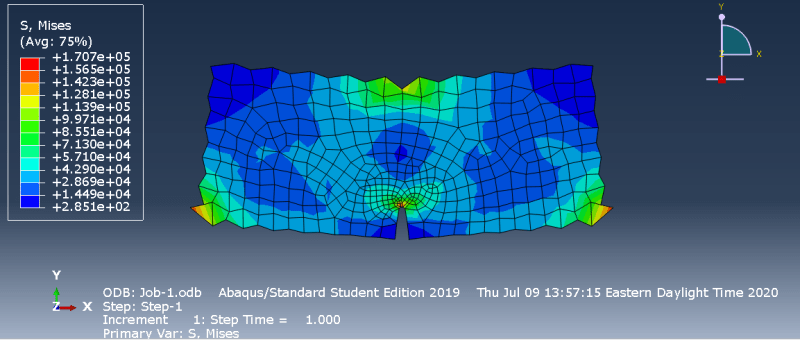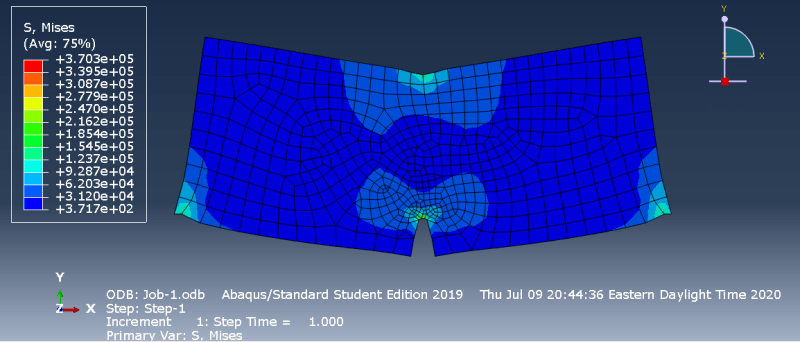Hi. I'm attempting to model a three point test for a beam. I'm using a 2D planar model with two vertically restrained boundary conditions on the bottom corners and a concentrated load on the middle of the top side. A crack is also modelled in the beam. As you can see in the image, the vertical position of the nodes on the top side alternates creating this "wrinkly" appearance. I imagine this could lead to inaccurate results when trying to measure the displacement. I'm using the student edition which limits the number of nodes to 1,000 so I would not be able to refine the mesh much more. Does anyone know how I might correct this issue? Thanks.



